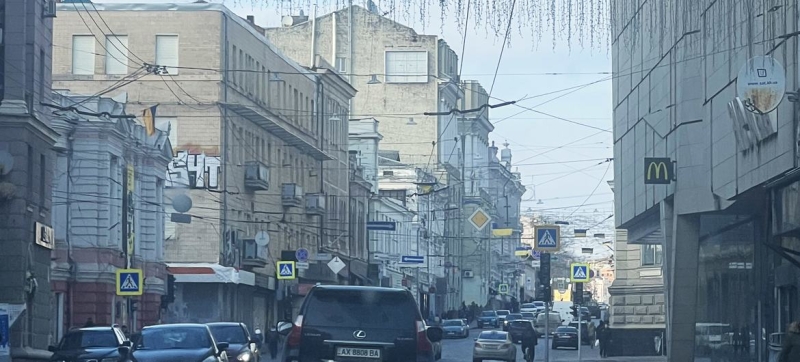
Center of Kharkov. The humanitarian situation in the Kharkov region continues to deteriorate Humanitarian assistance
The attack on Kharkov on Tuesday resulted in casualties – at least 15 civilians were injured. Seven thousand people were evacuated from the border areas of the Kharkov region due to the intensification of hostilities. Lisa Douten stated this at a meeting of the Security Council, speaking on behalf of the head of the UN Office of Humanitarian Affairs, Martin Griffiths.
She recalled that as a result of several waves of shelling in the Kharkov region over the past few days, many civilians, including children, have been killed and injured. The attacks also resulted in massive destruction of civilian infrastructure and displacement of populations from border and frontline settlements.
Civilian casualties
According to the authorities, to date more than 7 thousand civilians have been evacuated from the border areas of the Kharkov region. People in the Donetsk and Sumy regions, in the east and north of the country, have also been hit by shelling in recent days, with homes and civilian infrastructure damaged.
Read also:
INTERVIEW | How UNICEF in Kharkov helps families evacuating from areas bordering Russia
In total in April Management The UN High Commissioner for Human Rights (OHCHR) recorded more than 700 civilian casualties across Ukraine – 129 people were killed and 574 were injured. Thus, the number of victims is growing for the second month in a row. 90 percent of all civilian casualties were registered in Ukrainian-controlled territory. , which also reportedly killed several civilians and damaged homes and civilian infrastructure.
Attacks on energy infrastructure
Since March 22, 2024, the UN and its partners, as the speaker noted, have witnessed five waves of attacks directed against the energy infrastructure of Ukraine. In April alone, OHCHR recorded 50 such incidents. The Kharkiv and Dnipropetrovsk regions have been particularly affected: according to the Ukrainian Ministry of Energy, since March, up to 250,000 residents have faced rolling blackouts in Kharkiv and ongoing restrictions in the Dnieper.
As a result of these attacks, power plants and electrical substations were destroyed or damaged. “The impact of these power outages on our most vulnerable communities is enormous. They have temporarily left millions of households across the country without electricity, water and gas needed for cooking, heating, and hygiene,” Douten added.
Children who rely on online learning fail to learn, she said. Elderly people with mobility impairments, people with disabilities who use wheelchairs or other assistive devices, and mothers with small children cannot leave high-rise apartment buildings to access food and medical care.
“New form” of attacks
“We are extremely concerned about what appears to be a new form of attack on railway infrastructure in eastern and southern Ukraine,” the speaker continued. In April alone, she said, OHCHR recorded ten attacks on railway infrastructure in government-controlled territory. The shelling killed 16 civilians and wounded 59 others.
Damage to the rail system, Doughten warned, is hampering the movement of people and goods such as construction materials , and other essential items. “In addition, attacks on factories and production facilities are a cause for concern, limiting the availability of locally procured humanitarian goods,” she added.
Continuing attacks on Ukraine’s port infrastructure is jeopardizing their ability to export grain and other agricultural goods at a time when the number of people facing severe food shortages around the world continues to grow year on year.
Attacks on energy facilities in Russia
The UN, as noted by the OCHA representative, is alarmed by reports of attacks damaging energy infrastructure and oil refineries in the Russian Federation. “Such attacks could further inflame the war and worsen its humanitarian consequences,” she warned.
The UN has repeatedly recalled that, in accordance with According to international humanitarian law, parties must at all times ensure the safety of civilians, as well as civilian objects, including residential buildings, schools, hospitals and other life support facilities.
Delivery of humanitarian aid help
The intensification of hostilities makes the delivery of humanitarian aid even more dangerous. However, the UN and its humanitarian partners are doing everything they can to reach people in need of support. Across the country, as of the end of March this year, 3.6 million people had received humanitarian assistance in one form or another.
More than ten interdepartmental convoys delivered year, basic necessities for 20,000 people in the front-line areas. Aid also included providing health care to nearly 860,000 people; maintenance of water supply and wastewater systems for more than 1.7 million people, and emergency water supply for more than 1.2 million people.
2 million people received food support, as well as livestock commodities and seeds, and approximately 580,000 people received assistance to purchase basic necessities and materials for emergency home repairs.
Donors have provided 22 percent ($669 million) of the $3.1 billion requested in assistance to Ukraine.
Residents of Russian-occupied areas
Another problem, as noted by the UN representative, remains providing assistance to civilians in the Donetsk, Lugansk, Kherson and Zaporozhye regions, which are currently under occupation of the Russian Federation. “We are deeply concerned about the approximately 1.5 million people in need of life-saving assistance in these areas,” she said, calling for access to people in need of support.
